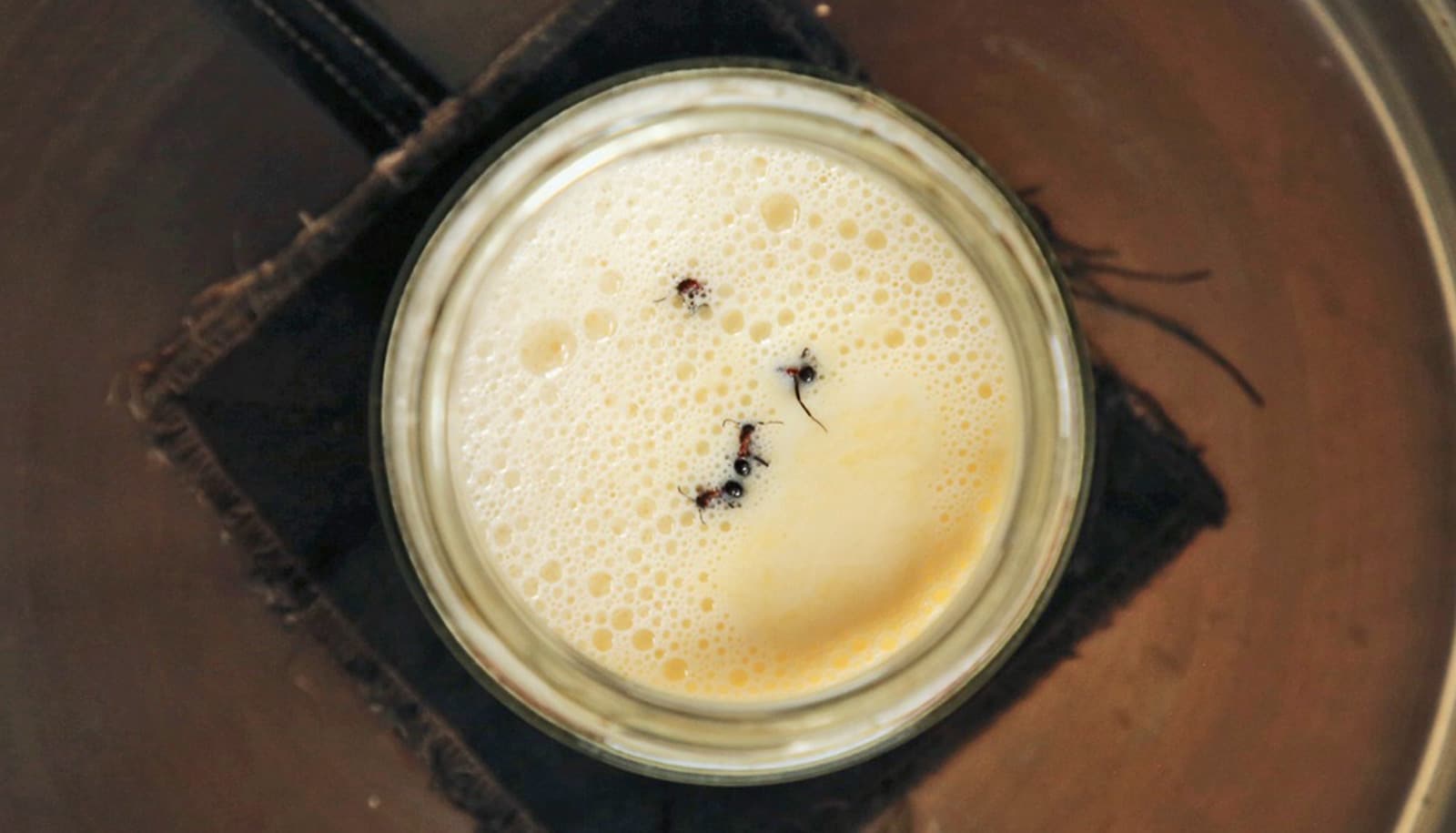Researchers have recreated an old traditional recipe for yogurt made from ants.
In a new study, they show how ants and the bacteria that live on them can transform milk into yogurt.
This provides new knowledge about the food traditions of the past and one of today’s major food trends, and the study may also inspire new sustainable foods.
Take four live forest ants. Put them in a jar of warm milk. Cover with a piece of cloth, then place the jar in an ant colony overnight. Voila! You now have tasty yogurt.
This is how yogurt was made for generations in many parts of Turkey and the Balkans. Today, the tradition has largely died out. But what is actually the science behind the method? And what can modern research learn from this method?
A team of biologists, food scientists, and anthropologists from the University of Copenhagen and DTU, among others, set out to investigate this in collaboration with chefs from the Michelin-starred restaurant The Alchemist. No one has ever described the biology behind this mysterious recipe.
To better understand this unique yogurt tradition, the researchers visited the Bulgarian village where coauthor Sevgi Mutlu Sirakova grew up. Here, her relatives and locals still remembered the recipe for ant yogurt.
“Following instructions from Sevgi’s uncle and people in the village, we put ants in a jar of warm cow milk and tucked it into an ant mound. The next day, the milk had begun to thicken and sour. It was the early stage of yogurt, and it tasted slightly tangy with a hint of herbs,” says Veronica Sinotte, assistant professor at the University of Copenhagen and lead author of the study, which appears in the journal iScience.
Back in the laboratory in Denmark, the researchers discovered that ants carry lactic acid and acetic acid bacteria. These help the milk to coagulate, while the ants’ own chemical defense, formic acid, makes the milk sour and creates the right environment for the yogurt microbes. the lab analyses also showed that enzymes from both the ants and their microbes break down milk proteins and contribute to the texture of the yogurt.
“We found that it is the interaction between the ants and the bacteria they carry that triggers the fermentation process. Neither the bacteria nor the ants alone does the magic—the secret lies in the synergy between them,” says Sinotte.
The study also provided new insights into the history of another popular food. One of the lactic acid bacteria the researchers found in the ants is one of the most prevalent bacteria in modern sourdough.
“An intriguingly thing we discovered was that ants also excrete the F. sanfranciscensis bacterium. This bacterium has only been found in two places in the world: in ants and in sourdough bread. Ants have probably carried the bacterium around for millions of years, which means that the origin of sourdough—so popular these days—is most likely ants,” says Sinotte.
As part of the project, The Alchemist developed three items based on ants: an ice cream dessert based on ant yogurt, an “ant mascarpone” and a cocktail with ant-fermented milk.
But not only gourmet restaurants can benefit from the new insights gained in the study.
“The yogurt you buy in the supermarket today is typically made with only two bacterial strains. But as we work toward creating a more sustainable food system, it makes perfect sense to explore the vast diversity of remarkable microbes found in traditional foods such as ant yogurt. They can contribute both flavor and texture in the development of new foods,” says Sinotte.
The researchers see great potential in using microbes and enzymes from ants to develop, for example, plant-based yogurt and new variations of sourdough bread.
All in all, ant yogurt is an example of how humans, through traditional practices, are deeply connected to nature, Sinotte emphasizes:
“We and our culture are more shaped by nature and microbes than many of us realize. That is why it is important not to dismiss the old practices that have been passed down from generation to generation, but instead to learn from them. So I hope people will listen when their grandmother shares an old recipe that sounds a bit odd.”
If anyone is tempted to put ants in their milk at home, however, the researchers’ advice is: Don’t do it!
In the study, the team compared yogurt made with frozen, dehydrated, and live ants. They found that live ants produced the best results. However, ants can carry parasites that may be harmful to health. And while using frozen or dehydrated ants avoids the parasite problem, it instead creates a risk of harmful bacteria proliferating. That’s why, the researchers stress, only people with specialized knowledge should attempt the recipe.
Source: University of Copenhagen



